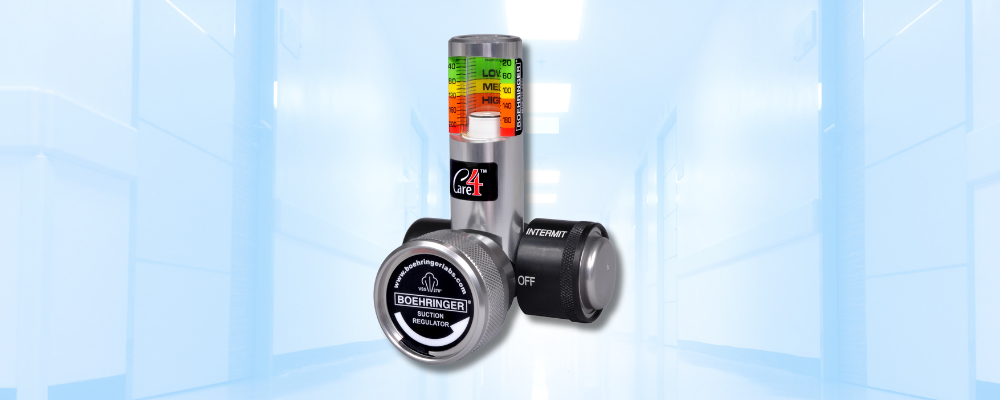What is a Suction Regulator?
June 12, 2019

A Quick Overview
A suction regulator is a medical device that converts the high negative pressure from a hospital’s central vacuum system into a safe, usable level for patient care. Without regulation, the vacuum pressure would be too strong and could damage tissue or cause complications.
Suction regulators protect both patients and equipment by ensuring:
- Accurate control of vacuum levels
- Safe and effective fluid removal
- Reliable performance in critical situations
How It Works
At its core, a suction regulator uses a pressure-limiting mechanism to reduce high vacuum pressure. This mechanism often involves:
- Springs and diaphragms to balance vacuum force
- Adjustable dials or indicators for precision control
- Pressure relief systems to prevent over-suction
These components allow clinicians to set a specific vacuum level appropriate for different applications, from delicate airway suctioning to robust surgical evacuation.
Why Precision Matters
Suction regulators are not simple “on/off” devices. They are built for situations that require precision and control. The internal engineering behind a modern suction regulator often includes:
- Magnetic dampers to stabilize readings
- Hysteresis mechanisms for smoother transitions
- Flow indicators to verify proper system operation
These features are especially important in high-risk or variable environments such as:
- Emergency rooms
- Operating rooms
- Intensive care units
- Trauma bays
Common Applications
Suction regulators are used across nearly every clinical unit of the hospital. You will typically find them:
- Attached to the wall near a patient bed
- On crash carts for airway clearance
- Integrated into surgical stations
They support chest drainage, gastric decompression, and wound suction. Suction regulators help clinicians safely remove fluids, clear airways, and manage contamination risk during care.
Types of Regulators
Different procedures require different suction levels. That’s why regulators are often configured for:
- Continuous suction for GI or respiratory management
- Intermittent suction for controlled removal cycles
- Full-line vacuum for high-powered, high-flow use cases
Some regulators are fixed to a mode. Others are dual-mode and adjustable.
Looking for the Right Suction Regulator?
Explore how Boehringer’s line of suction regulators delivers precision, durability, and ease of use for hospitals and surgical centers.